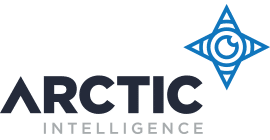Inadequate AML/CFT and Sanctions oversight exposes institutions to significant regulatory sanctions, reputational harm, and financial penalties.Risk-focused, actionable reporting is essential to helping Boards mitigate these threats and reinforce compliance
To empower the Board to fulfill its oversight responsibilities, the AML/CFT and Sanctions Compliance Officer plays a critical role. By adopting a strategic approach to reporting, the Compliance Officer can ensure that the Board receives meaningful and substantive information that goes beyond mere formalities. Effective reporting empowers the Board to engage in informed discussions, prioritise risk areas, and provide necessary support for the compliance program.
Here are several ways a Compliance Officer can effectively report to the Board of Directors, fostering a collaborative environment that strengthens the institution’s overall compliance posture.
1. Prioritise Reporting and Resource Allocation Based on Risk
- Align with Risk Assessments: Tailor reporting to the latest risk assessment, focusing on high-risk areas and using data to quantify resource needs. Link requests directly to risk mitigation – e.g., hiring analysts for transaction monitoring – and guide the Board’s decisions on critical resource allocation, such as for investigations and training.
- Link Resources to Risk Reduction: Clearly show how each resource supports risk mitigation or addresses deficiencies, providing specific examples to strengthen the case.
2. Leverage Data-Driven Insights Through Metrics and Benchmarks
Well-chosen metrics help the Board objectively track performance and adjust strategies based on data-driven insights. Move beyond basic metrics like SAR trends and training rates – incorporate a wider range of benchmarks for a fuller picture of program effectiveness
- Metrics for Different Program Areas: Use relevant metrics to assess the effectiveness of various program components, such as:
- Transaction Monitoring: Include metrics like the number of alerts generated, alert disposition rates, and false positive rates.
- Customer Due Diligence (CDD) and Enhanced Due Diligence (EDD): Track completion rates, timeliness, and effectiveness of KYC/AML procedures.
- Vendor Management: Monitor ongoing due diligence on third-party vendors.
- Benchmarking for Context: Supplement internal metrics where possible with industry benchmarks or regulatory guidance to provide context for the institution’s performance.
- Data-Driven Decision Making: By leveraging data and metrics effectively, the Compliance Officer empowers the Board to make informed decisions about resource allocation, program enhancements, and overall risk mitigation strategies.
3. Actionable Recommendations with Resource Considerations
Beyond identifying challenges, provide actionable recommendations that:
- Prioritise Critical Risks: Focus on addressing the most pressing risks facing the institution.
- Quantify Resource Needs: Include estimates for staffing, technology, and training, enabling the Board to make informed decisions on resource allocation and implementation.
This approach fosters proactive decision-making and demonstrates a commitment to timely, effective compliance.
4. Foster Board Engagement Through Compliance Education
Go beyond basic regulatory knowledge by tailoring education to the Board’s knowledge level and risk profile. Focus on emerging threats, best practices, and case studies to enhance their understanding and decision-making.
- Engage the Board: Use interactive discussions and Q&A sessions to ensure Board members fully grasp emerging threats and compliance complexities, enhancing informed decision-making.
- Cultivate a Compliance Culture: Effective Board education sets the tone for a robust compliance culture throughout the institution.
5. Highlight Program Success and Effectiveness
Along with addressing risks, emphasise program successes. Metrics like reduced SAR false positives and faster KYC completion times demonstrate the tangible value of compliance efforts and reinforce Board support.
- Demonstrate risk mitigation and return on investment by showing how improvements reduce risks and highlight the program’s effectiveness with clear metrics.
Balancing challenges with success stories strengthens Board support and illustrates the program’s role in safeguarding the institution.
6. Foster a Collaborative Environment Through Open Dialogue
Move beyond simply encouraging questions – actively create an environment that promotes open dialogue and collaboration during Board meetings. Key strategies include:
- Encouraging Open Discussion: Actively invite Board input, clarifications, and questions.
- Anticipating Questions: Be prepared to address potential concerns or questions raised by Board members.
- Engaging Report Formats: Use visuals, data dashboards, and interactive elements to make reports more accessible and engaging.
A collaborative environment allows the Compliance Officer to gain valuable insights from the Board, leading to better decision-making and a stronger compliance program.
7. Maintain Clear Documentation for Transparency and Continuity
- Document Key Discussions and Decisions: Ensure Board minutes accurately capture discussions and decisions on AML/CFT & Sanctions compliance.
- Ensure Transparency and Accountability: Clear documentation demonstrates transparency in the Board’s oversight and provides an auditable record of key decisions.
- Facilitate Continuity: Detailed minutes offer valuable context for future Board members and compliance personnel, aiding in continuity and informed decision-making.
- Handle Sensitive Information with Care: Exclude sensitive SAR details from Board minutes to preserve ‘safe harbour’ protections. Use secure, separate channels to address highly sensitive issues when necessary, ensuring transparency without risking confidentiality.
Stronger Boards, Stronger Compliance
By adopting these strategies, Compliance Officers transform Boards into active partners in safeguarding the institution. A collaborative, data-driven approach ensures informed decisions, better resource allocation, and stronger compliance. Ultimately, this proactive partnership fortifies the institution’s defence against financial crime and regulatory risks.
Disclaimer:
This blog post is intended for informational purposes only and does not constitute legal, accounting, or professional services advice. Our team of professionals with expertise in AML/CFT and Sanctions compliance uses AI tools like ChatGPT to support our writing process in different ways. Sometimes, AI is used to improve upon a draft we’ve written, while other times, it’s employed to synthesize and combine information from reputable sources, such as FinCEN, FFIEC, CFPB, FATF, and state regulatory bodies, around a concept or idea. In both cases, the final content is shaped and validated by professionals to ensure accuracy, clarity, and alignment with compliance standards. However, since each institution’s compliance needs are unique, we recommend seeking advice from qualified experts in legal, accounting, or compliance consulting. The effectiveness of the strategies and practices discussed depends on your institution’s specific risk profile and tolerance, so customisation is advised.
Partnering for Success
Arctic Intelligence provides cutting-edge technology that empowers financial institutions to conduct effective and efficient risk assessments. Their platform streamlines processes, supports compliance with regulatory requirements, and enables ongoing risk management. MSB Compliance Inc. is proud to partner with Arctic Intelligence to bring this innovative solution to the U.S. MSB and fintech market.
Together, we are committed to helping financial institutions build a strong foundation for success – a foundation built on effective risk assessment and driven by an unwavering commitment to compliance.



